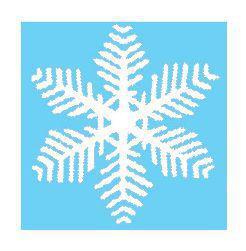SAS Urban Survival Handbook (78 page)
Read SAS Urban Survival Handbook Online
Authors: John Wiseman
Tags: #Health & Fitness, #Reference, #Survival, #Fiction, #Safety, #Self-Help, #Personal & Practical Guides, #General, #Survival Skills

Adverse conditions: SNOW/ICE
- ◑ Service your vehicle so it doesn’t let you down.
- ◑ Stock up with anti-freeze, windscreen wash, de-icer and scraper BEFORE cold weather sets in!
- ◑ Carry a small emergency kit including food, flashlight, matches and first-aid kit.
- ◑ Emergency triangles will alert other motorists if you get into difficulty.
- ◑ Two candles can create sufficient heat to warm a car interior and save running the engine.
- ◑ A shovel and a bag of sand (or even cat litter, which doesn’t freeze) could help get you out of deep snow.
STUCK IN SNOW
To get out of this slippery situation:
- ■
DON′T accelerate hard. This will compact the snow and probably force it into the tyre treads, too - ■
Straighten the wheels and start in second gear - ■
Place something under the driving wheels (is your car front-, rear- or four-wheel drive?) to provide traction. Sacking, cardboard, sand, grit, twigs, a rug, blanket or clothing will do. Dig/scrape the snow away as much as possible first - ■
Get a push from your passengers, but . . . - ■
DON′T let them stand behind the car – it could roll or slide back - ■
DON′T stop for them until you’re on firmer ground
DEEP SNOW
- ■
Try ′rocking′. Drive forward as far as possible (in first gear, gentle revs), then quickly engage reverse and go back slowly a few inches. Repeat until you’ve built up a track - ■
If that fails, dig the snow from around all four wheels and proceed with above techniques
- ■
- ◑ In sub-zero temperatures, metal parts of the car may ‘burn’ the skin of your hands.
- ◑ Heavy items in the boot will increase traction in a front-wheel drive car.
- ◑ Check tyre pressures—if they’re low, grip is reduced. Inflate wide-grooved radial tyres slightly more than normal.
- ◑ Pump the brakes to avoid wheel lock (this also warns the car behind) and don’t steer at the same time. Brake GENTLY.

EMERGENCY!
SNOWBOUND
If you find yourself trapped in a blizzard or snowdrift, you must above all KEEP WARM and KEEP AWAKE. DON′T try to go for help—there are plenty of cases of people dying of exposure a few yards from civilization.
Take your
survival pack
from the boot, CLEAR an area around the exhaust pipe so you can run the engine and heater without risk of
carbon monoxide poisoning,
and stay in the car.
DON′T
run the engine constantly—too much heat makes you
drowsy,
you’ll create too much exhaust and you could run out of
fuel
—ten minutes an hour is sufficient.DON′T
keep the radio on—you’ll flatten the
battery.
Wrap up in clothing, blankets, car carpets, newspapers—whatever is to hand—and move limbs, fingers and toes from time to time so that you keep blood circulating.Falling asleep is
dangerous
because your body temperature lowers and you could succumb to
hypothermia.
You could also
suffocate,
if the car gets buried.DON′T
drink alcohol as this also lowers the body temperature, as well as clouding judgement and encouraging drowsiness. Open a window (away from drifting snow) occasionally and, if the car is getting buried, poke a wheel jack or umbrella up through the snow to make an
air channel.If you’re stranded with others, huddling together in one vehicle creates warmth and boosts morale. Take it in turns to nap. If another vehicle comes into range, possibly a rescue service, flash your lights and bip your horn. They may not be able to see your car, or may not realize there is anyone inside.
- ◑ DON’T drive peering through a small clear patch on a misty screen. Liquid soap or washing-up liquid rubbed on the glass will help prevent misting up.
- ◑ Drive at low speed in as high a gear as possible. Stopping distance in ice can be ten times greater than normal and a high gear reduces the chance of wheel spin.
- ◑ Uphill: try to ascend without stopping or changing gear. Wait at the bottom until you have an uninterrupted climb.
- ◑ Downhill: descend very slowly in a very low gear and try not to brake.
- ◑ Travel by daylight and use major highways.
- ◑ Tell someone where you’re going—if something happens, you’ll be easier to find.
WINTER MOTORING SURVIVAL KIT
To be prepared for the worst, always carry the following:
A shovel, sacking or grit, blankets, extra clothing, sleeping bag, wellington boots, a flashlight and spare batteries.
For longer journeys, especially out of town, add:
Food, a flask of hot drink, a book or a battery-operated radio/tape player.
Adverse conditions: HOT SUN
What’s adverse about that? Apart from the problems of visibility due to glare, sunny skies tend to make for lapses in concentration—two thirds of all road accidents happen in good weather. Heat also frays tempers, and accidents are accompanied by unnecessary extra injuries when angry drivers come to blows. If your car overheats, stop to allow the engine to cool. If you are driving in unfamiliar territory and stopping is out of the question, switch on the heater. This will give greater volume to the cooling water and, although the inside of the car will get even hotter, the engine will cool.
When convenient stop and open up the bonnet.
Do not undo the radiator cap until the temperature drops.
Check the radiator and all hoses for leaks. If the radiator is leaking, adding the white of an egg will seal small holes.
If there is a large hole, squeeze that section of the copper piping flat to seal it off. It will reduce the size of the cooling area but, if you drive very steadily, you will be able to keep going.
Metal gets HOT. Be careful! All metal parts of a car can become hot enough to cause blisters.
When adding fuel in sandy conditions, sand and dust can get into the tank. Rig a filter over or just inside the inlet to the tank to prevent contamination.
If you’re involved in an accident, keep your cool. If necessary, stay in the car until the police arrive. Certain road surfaces soften in hot sun—check tyre treads since they can collect sticky grit this way.
REMEMBER
NEVER leave children or animals in the car in hot weather unless you definitely know it will only be for a couple of minutes. If you must, open the window as far as you safely can and return soon. Invest in shades for front and back windscreens to guard against overheating the interior, when you can’t park in the shade. Perforated metal roll-down blinds are available to stick on side windows too.
Adverse conditions: FLOOD
- ◑ Try to assess the depth of a ‘sheet’ of water before entering, using other cars, trees, lampposts or depth marker posts as gauges or by throwing in a heavy rock.
- ◑ NEVER drive fast through water. You could send a wave over the engine and stall it, you will obscure your vision and may skid.
- ◑ Wait for other cars to go through first.
- ◑ Drive on the crown of the road where the water is at its most shallow.
- ◑ Drive slowly in first or second gear, keeping the revs high, and slip the clutch.
- ◑ NEVER change gear in water and try not to stall. This can suck water through the exhaust and into the cylinders, damaging pistons, connecting rods and crankshaft.
- ◑ Water higher than the fan blades—not even knee deep—will make them send a spray over the engine and can do a lot of damage.
- ◑ Once through the water, TEST YOUR BRAKES—they’re probably soaked and useless. To dry them out, drive slowly with light pressure on the brake pedal, then pump them gently. Don’t speed up until they’re OK.
Skid control
When the tyres lose their grip and slide along the road surface, you’re in a skid. It happens principally when the car is being driven too fast for the road conditions. DON’T PANIC! You must first identify which wheels are skidding and then act swiftly and calmly.
FRONT-WHEEL SKID: You’ve turned the steering wheel, but the car keeps going straight. Usual cause: accelerating too hard into a bend.
In a
rear-wheel-drive car
, take feet off ALL pedals and gradually turn the wheel in the direction the car is moving. When the front wheels grip, accelerate gently and steer out. In a
front-wheel-drive car
, ease off the accelerator, retaining contact, and continue steering smoothly in the direction you want to go. When you’re back on course, straighten the wheels and accelerate gently.
REAR-WHEEL SKID: The back of the car swings round. Usual cause: taking corner too fast in a front-wheel-drive car.
Take feet off ALL pedals and gradually turn the wheel in the same direction the back of the car is sliding. When all wheels are aligned, accelerate gently.
FOUR-WHEEL SKID: The wheels lock and the car carries on travelling forward without losing speed. Usual cause: hard braking.
Ease off the brake until the wheels start to turn. Once you can steer, straighten the wheels and pump the brakes to avoid locking again.

WARNING
NEVER slam on the brakes as you start to skid. This ‘natural’ reaction is the worst thing you can do.
BREAKDOWNS
Not only inconvenient, but dangerous if you’re alone in a quiet area (see SELF-DEFENCE) or you’ve driven out of town in severe weather. If you carry a spare parts kit at all times, AND learn how to use it, you’ll be prepared for most situations.
Basic car maintenance
To minimize the likelihood of breakdown or accident (and reduce garage bills!), do these simple checks on your car once a week:
- ◑ Keep the oil (the lifeblood of the engine) topped up (and don’t fail to replace it along with the filter at the recommended mileage).
- ◑ Check for leaks (of ANY fluids).
- ◑ Tighten loose spark plugs—check their leads are secure and look at the distributor to check the points.
- ◑ Check/top up levels of brake and battery fluid, washer bottle and radiator.
- ◑ Add anti-freeze to the radiator in winter.
- ◑ Tighten exhaust manifold bolts.
- ◑ Check alternator drive/fan belt.
- ◑ Clean and grease battery terminals.

EMERGENCY!
BREAKDOWN
Despite ALL preparations and all your good intentions, something WILL go wrong. These temporary measures will help you to get to the garage or a callbox: